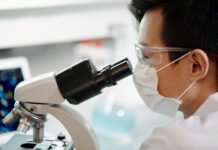Despite being one of the most feared diagnoses in healthcare — or perhaps because of it — researchers have made incredible strides in recent years towards tackling the complex disease of cancer.
From better understanding environmental triggers, to developing new detection methods, these novel approaches are allowing physicians to detect and treat cancer in progressively earlier stages. The recent revolution in artificial intelligence holds the most promise, as demonstrated by one study that used it to detect chemicals associated with lung cancer in breath tests.
Yet what about the non-physical effects of the disease? Previous research has found that cancer patients are at an elevated risk for developing mental disorders, including depression and anxiety. Can artificial intelligence (AI) also help here? A new study by researchers from The University of British Columbia and BC Cancer seems to indicate that it can.
Artificial intelligence, but natural language processing
To establish the importance of their research, the study authors highlight that not only are cancer patients at an elevated risk for mental disorders, but that the conditions they may develop are actually associated with lower survival odds as well. Therefore, earlier and more accurate detection of the specific cancer patients that will require a counsellor or psychiatrist may also assist with better patient outcomes.
Using a specific form of AI called Natural Language Processing (NLP), and more specifically machine learning (ML), the researchers aimed to train AI models to detect which patients would benefit from a counsellor or psychiatrist.
Like most forms of AI, the efficacy of these models depend largely on the types of data being fed into them. The authors used “unstructured data” in the form of oncologists’ initial consultation document to train the NLP models. As they outline, these documents are easily accessible and may contain information that could suggest the need for psychosocial support.
NLP models upon models
To find the most effective approach, the researchers used four NLP models that fundamentally differed in the ways they understood and analyzed text. The team then used 70% of their available data (from nearly 48,000 patients) for training the models, 10% for developing them, and then the final 20% for testing them. In reality, 1.4% of the patients had seen a psychiatrist, while 21.1% had seen a counsellor — creating the prediction targets for the NLP models.
The models broke down text into smaller chunks called “tokens”, which also removed the endings from most words. For example, this allowed the models to understand that any documents that contained “counselling” or “counsellor” both referred to the same token “counsel-“, and referred to the same thing.
After running the models, the researchers found that tokens associated with mental health were important for predicting both counsellor and psychiatrist visits, while tokens associated with the patient’s cancer (i.e. “radiat”) were important only for psychiatrist predictions. Overall, they found that the most effective models were successfully predicting whether a patient would need a psychiatrist or counsellor — though the rates were higher for the former.
The authors conclude by stating that they believe “further development will allow these techniques to improve and extend the lives of patients with cancer by helping to identify psychosocial needs that cause distress and sometimes interfere with cancer treatment.”






































